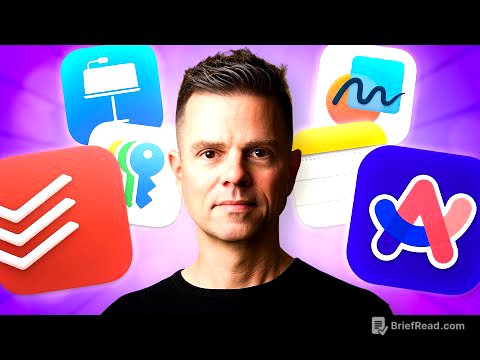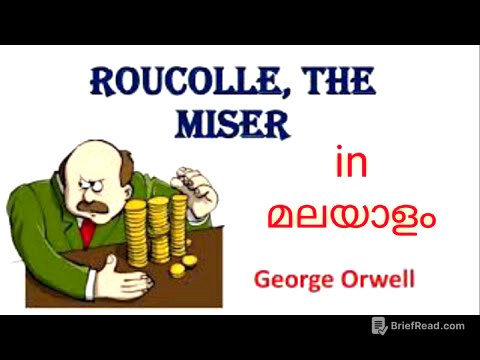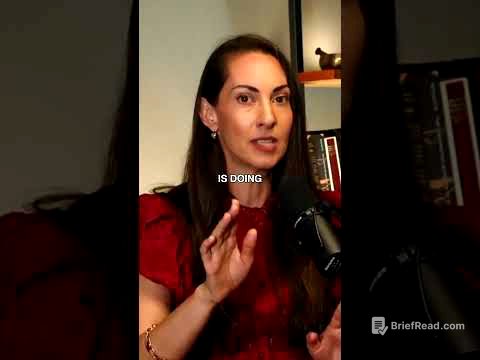TLDR;
This video provides a guide on how to optimize work performance by changing mindset, planning effectively, and managing time efficiently. It emphasizes creating a long-term vision, planning in 12-week cycles, and allocating time for strategic work, buffer tasks, and relaxation.
- Creating a long-term vision
- Planning in 12-week cycles
- Allocating time for strategic work, buffer tasks, and relaxation
mở đầu [0:00]
The video begins by addressing viewers who struggle with focus and procrastination. It introduces the topic of optimizing work performance with the help of a book, aiming to find ways to improve efficiency and concentration.
Bắt đầu từ tầm nhìn [0:22]
To optimize work performance, the initial step involves changing one's mindset by creating a long-term vision. This vision should be developed by answering questions about personal aspirations, desired legacy, career goals, and hobbies. The video stresses that this vision should be ambitious and focused on personal growth rather than being limited by current circumstances. The purpose of having a strategic vision is to connect actions and avoid disjointed efforts, encouraging individuals to prioritize long-term benefits over temporary gains. The video advises viewers to define their vision for their entire life, as well as for the next 5, 10, and 15 years, with specific goals. It is important to differentiate between what one genuinely desires and what society dictates, focusing on the knowledge and values gained from work. While financial goals are valid, the vision should stem from a deep personal desire. Additionally, the video introduces the concept of a 3-year vision, which is more short-term and requires more concrete goals, such as becoming an expert in a specific field or gaining financial investment knowledge. Viewers are encouraged to reflect on why they have these aspirations and whether their current actions support them, identifying any obstacles hindering their progress, such as distractions or lack of knowledge.
Lên kế hoạch [6:03]
The video transitions to the importance of planning for controlling tasks, saving time, and maintaining focus on the long-term vision. It introduces a planning approach based on the idea that a year's worth of work can be accomplished in just 12 weeks. Traditional year-long plans often lead to procrastination and lack of focus, with real effort only emerging in the final months. The video suggests distributing work evenly, adopting a marathon approach with consistent effort and strategic planning. The video advises viewers to abandon year-long plans in favor of 12-week plans to maintain a broad vision while focusing on specific details. A 12-week plan can be summarized on three pages, allowing for a comprehensive view of monthly and daily goals. The video emphasizes flexibility in planning methods, whether using weekly or monthly formats, and shares personal experiences with these strategies. Highlighting successful days in the plan with green indicates progress, while marking failures with red provides a clear overview of performance. Achieving 85% green highlights indicates excellent progress. The video highlights that each week is part of a larger strategy, and each day is a battle to achieve set goals. It acknowledges that failure is common and that success requires perseverance and dedication.
Quản lý thời gian [10:57]
The video discusses time management, dividing the day into three types of time: strategic, buffer, and relaxation. Strategic time is dedicated to the most important tasks, with the video creator allocating 9 AM to 3 PM for focused work, including short breaks. This time is reserved exclusively for tasks that align with the 12-week plan. Buffer time is used to handle smaller, miscellaneous tasks like answering emails or making calls, which can be grouped and completed within 30 minutes to an hour. Relaxation time is crucial for maintaining overall effectiveness, distinguishing efficient work from simply spending more time working. The video suggests that those who work efficiently spend more time away from work, emphasizing that after a period of intense focus, it is essential to rest. A minimum of three hours should be dedicated to relaxation activities such as exercise or outdoor activities to refresh the mind. The video draws a parallel between investing time and money, advocating for investing time wisely to yield returns. It promotes the idea of "choosing life" over "balancing life," highlighting personal responsibility in making choices. It encourages viewers to invest time in activities that yield long-term benefits, such as health and relationships, and to regularly reassess and adjust their time allocation based on current priorities. The video concludes by stating that the content shared is a basic overview of the book's concepts, encouraging viewers to explore the book for a more comprehensive understanding of optimizing work performance.









